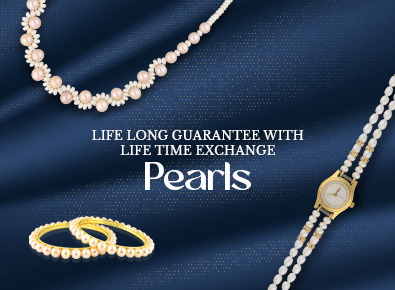If you are looking for perfectly round pearls, then Akoya pearls are what you seek. These rare pearls are valued very highly, not just for their shape but for their iridescence. Akoya pearls are often the centerpiece of jewellery, their brilliant presence lighting up any outfit.
How are Akoya pearls formed?
Akoya pearls are formed when a mollusk coats a round bead, introduced into the mollusk, with nacre. Since the bead is round, layers of nacre tend to fall almost symmetrically all over the pearl, ensuring these pearls are almost perfectly round. Each Akoya mollusk is nucleated with 3-5 beads, of which only 1 or 2 (in rare cases) are pearls that can be marketed. It is this process which makes Akoyas so rare and precious.
What factors to look for in an Akoya pearl?
 Since Akoyas are almost perfectly round, customers should focus on: luster, size of the pearl and color.
Since Akoyas are almost perfectly round, customers should focus on: luster, size of the pearl and color.
Akoya pearls are among the most lustrous types of pearls. Their sharp luster, the clarity of reflection and their iridescence makes them a gorgeous jewel with any outfit. Obviously, the higher these characteristics, the more expensive the pearl gets.
Akoya pearls have a smaller range of size than most other pearls. They range from about 2mm-10mm, with pearls above 8mm being very rare. Since the roundness of these pearls, and their shiny brilliance, gets enhanced with size, the price of larger Akoya pearls tends to go upwards with every millimeter.
Akoyas are mostly sold in two colours: white or black.
Black Akoyas are dyed, as Akoya pearls naturally form as white pearls.
White Akoyas are found with gentle overtones of silver, rose or ivory. White akoyas with these colour tones are the most widely available akoyas. It is best to pick a Akoya pearls that complement your skin tone. Choosing pearls that blend in with your skin tone would lessen the kind of transformative impact pearls can have on a person’s style quotient.








